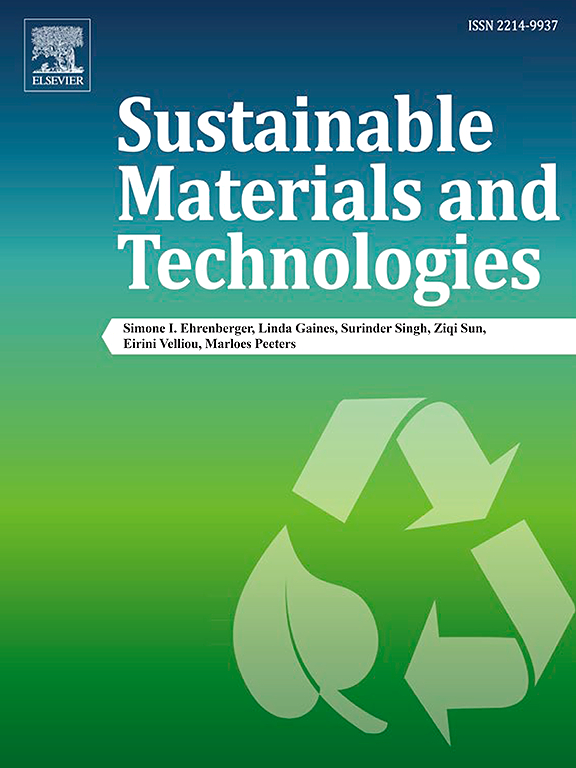Ecofriendly nanoprobe for differentiation between hydrogen peroxide producing bacteria and nonproducers: Zero waste circular economy of cooking and harvesting of energy
IF 8.6
2区 工程技术
Q1 ENERGY & FUELS
引用次数: 0
Abstract
A novel, affordable, and environmentally benign highly fluorescent carbon dots valorized from ignited peel of flame roasted eggplant (EPCDs) were introduced for the first time. The EPCDs were spontaneously and rapidly formed during eggplant roasting, for only 5 min, with high quantum yield (28.5 %). The emission of EPCDs was selectively quenched in the presence of Fe3+ through a mixed static quenching/ inner filter mechanism. Accordingly, a turn-off sensing platform composed of EPCDs coupled to Fe2+ enabled the highly sensitive detection of hydrogen peroxide (H2O2) through an acetate mediated Fe2+ oxidation. Acetate could boost sensor sensitivity by blocking Fe2+ back conversion to Fe3+ enabling the rapid detection of H2O2 down to concentration range from 13.12 to 87.55 nM, with very good accuracy (100 % ± 3), precision (%RSD < 3) and low detection limit (3.88 nM). The sensor was applied for H2O2 detection in different water samples as well as for the differentiation of H2O2-producing bacteria from nonproducers, for the first time, in liquid cell culture without any pretreatment step. The utilized EPCDs showed ecological superiority on Complex GAPI and AGREE metrics in addition to a 250-fold reduction in CO2 emission compared to the greenest reported H2O2 sensor paving the way for circular economy practice.

求助全文
约1分钟内获得全文
求助全文
来源期刊

Sustainable Materials and Technologies
Energy-Renewable Energy, Sustainability and the Environment
CiteScore
13.40
自引率
4.20%
发文量
158
审稿时长
45 days
期刊介绍:
Sustainable Materials and Technologies (SM&T), an international, cross-disciplinary, fully open access journal published by Elsevier, focuses on original full-length research articles and reviews. It covers applied or fundamental science of nano-, micro-, meso-, and macro-scale aspects of materials and technologies for sustainable development. SM&T gives special attention to contributions that bridge the knowledge gap between materials and system designs.
 求助内容:
求助内容: 应助结果提醒方式:
应助结果提醒方式:


